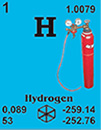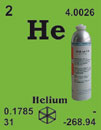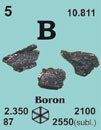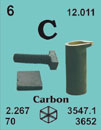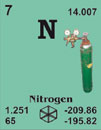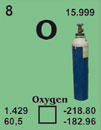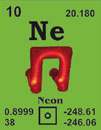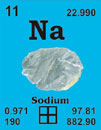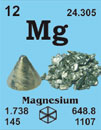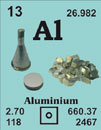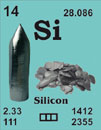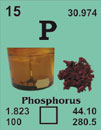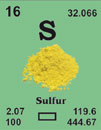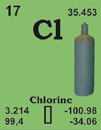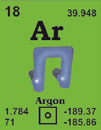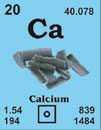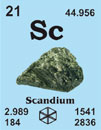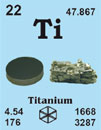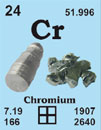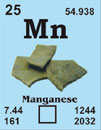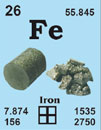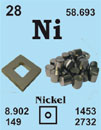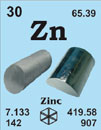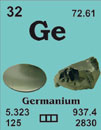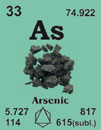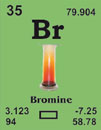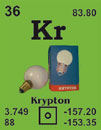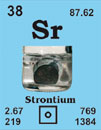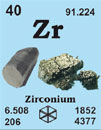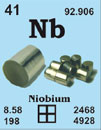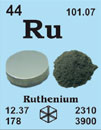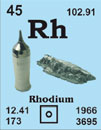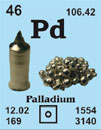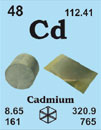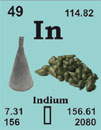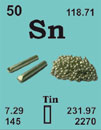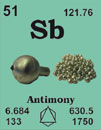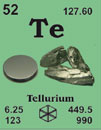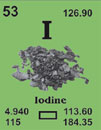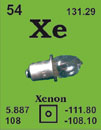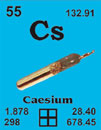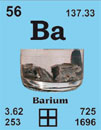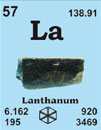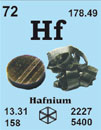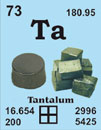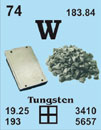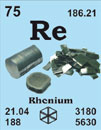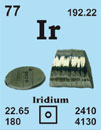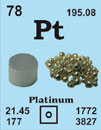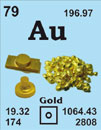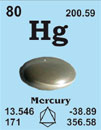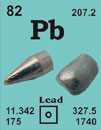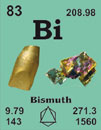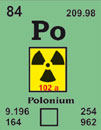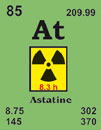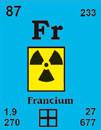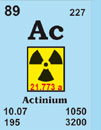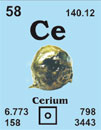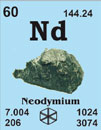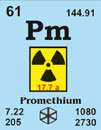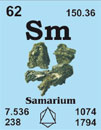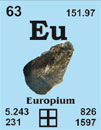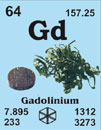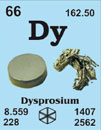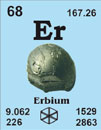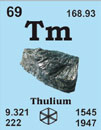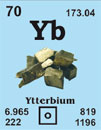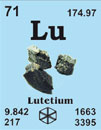Material, Technologie
& Kristalle GmbH
& Kristalle GmbH
Ihre Verbindung zu uns

-
 English
English
-
 Deutsch
Deutsch
Warenkorb
0
Artikel
Artikel
Keine Artikel
0,00 €
Gesamt
Gesamt zzgl. MwSt.
Artikel wurde in den Korb gelegt
Menge
Sie haben 0 Artikel in Ihrem Warenkorb.
Es gibt 1 Artikel in Ihrem Warenkorb.
Versandkosten (o. MwSt.)
noch festzulegen
Gesamt
(o. MwSt.)
Gold (Au)
Wir sind führender Hersteller und Lieferant von Forschungsmaterialien
Gold 79Au196.967
Bereits in den ältesten Kulturen bekannt.
[Angelsächsisch: Gold; Latein: aurum]
French: or
English: gold
Italian: aro
Spanish: aro
Beschreibung: Weiches Metall mit charakteristisch gelber Farbe. Es ist das dehnbarste und duktilste aller Elemente. Es wird nicht von Luft, Wasser, Säuren (außer HNO3-HCL) und Alkalien angegriffen. Verwendet für Goldbarren, Schmuck, Gläser (zum Färben und als Wärmereflektor) und in der Elektronik.
Gold single crystal properties
| State: | Single crystal |
|---|---|
| Crystal structure: | fcc |
| Production method: | Czochralski |
| Standard size: | diameter 10-20mm thickness 1-2mm |
| Orientation: | (100), (110) and (111) |
| Orientation accuracy: | <2°, <1°, <0.4° or <0.1° |
| Polishing: | as cut, one or two sides polished |
| Roughness of surface: | <0.03 µm |
| Purity: | 99.999% |
| Typical analysis (ppm): | Ag 4.20 Al 0.20 Ca 0.30 Cd < 0.1 Cl 0.16 Co 0.03 Cu 1.30 Fe 0.73 K 0.40 Mg 0.02 Mn 0.04 Mo 0.06 Na 0.10 Ni 0.05 Pd 0.25 Rh 0.10 S 0.13 Si 0.51 Ti 0.01 V 0.02 Zn 0.05 Au balance |
|---|
Further Materials properties
| Crystal structure: | (cell dimensions/pm), space group, f.c.c. (a=407.833), Fm3m |
|---|---|
| X-ray diffractions mass absorption coefficients: | CuKa 208 (µ/r) / cm2g-1 MoKa 115 (µ/r) / cm2g-1 |
| Neutron scattering length: | 0.763 b/10-12 cm |
| Thermal neutron capture cross-section: | 98.7 sa / barns |
| Density: | 19.3 kg/m-3 |
| Melting point: | 1064.43 °C / 1337.58 °K |
| Boiling point: | 2806.85 °C / 3080 °K |
| Molar volume: | 10.19 cm3 |
| Thermal conductivity: | 317[300 K] Wm-1K-1 |
| Coefficient of linear thermal expansion: | 14.16 x 10-6 K-1 |
| Electrical resistivity: | 2.35 x 10-8 [293 K] Wm |
| Mass magnetic susceptibility: | -1.78 x 10-9(s) kg-1m3 |
| Young's modulus: | 78.5 GPa |
| Rigidity modulus: | 26.0 GPa |
| Bulk modulus: | 171 GPa |
| Poisson's ratio: | 0.42 GPa |
| Radi: | Au3+ 91; Au+ 137; atomic 144; covalent 134 |
| Electronegativity: | 2.54 (Pauling); 1.42 (Allred); 5.77 eV (absolute) |
| Effective nuclear charge: | 4.20 (Slater); 10.94 (Clementi); 15.94 (Froese-Fischer) |
| Number of Isotopes (incl. nuclear isomers): | 39 |
| Isotope mass range: | 176-> 204 |
Biological data
| Biological role: | none, but acts to stimulate metabolism |
|---|---|
| Toxicity | |
| Toxic intake: | gold metal and gold salts generally have low toxicity |
| Lethal intake: | n.a. |
| Hazards: | Gold is poorly absorbed by the body and poisoning by gold compounds is very rare. Gold-based anti-arthritics can cause liver damage and kidney damage. |
| Level in humans | |
| Blood: | (0.1 - 4.2) mg dm-4 |
| Bone: | 0.016 ppm |
| Liver: | 0.0004 ppm |
| Muscle: | n.a. |
| Daily dietary intake: | n.a., but very low |
| Total mass of element in average [70 kg] person: |
0.2 mg |
Geological data
| Minerals: | Many minerals are known, and aluminium is present in many other minerals | |||
|---|---|---|---|---|
| Mineral | Formula | Density | Hardness | Crystal apperance |
| Gold | Au | 19.3 | 2.5 - 3 | cub., met. white |
| Sylvanite | AgAuTe4 | 8.16 | 1.5 - 2 | hex., met. white |
| Chief ore: | quartz veins in extrusive rocks |
|---|---|
| World production: | 1400 tonnes/year |
| Main mining areas: | South Africa, USA, Canada, Russia |
| Reserves: | 15000 tonnes |
| Specimen: | available as foil, powder, rod and shot. |
| Abundances | |
|---|---|
| Sun: | 5.6 (relative to H = 1 x 1012) |
| Earth's crust: | 0.0011 ppm |
| Seawater: | 1 x 10-5 ppm |
| Residence time: | n.a. |
| Classification: | n.a. |
| Oxidation state: | I |
Other sizes and specifications on request
Übersicht der Elemente mit Zugang zu unserem Shop
Tel.: +49 (0) 2461 - 9352 - 0
Fax: +49 (0) 2461 - 9352 - 11
Fax: +49 (0) 2461 - 9352 - 11

